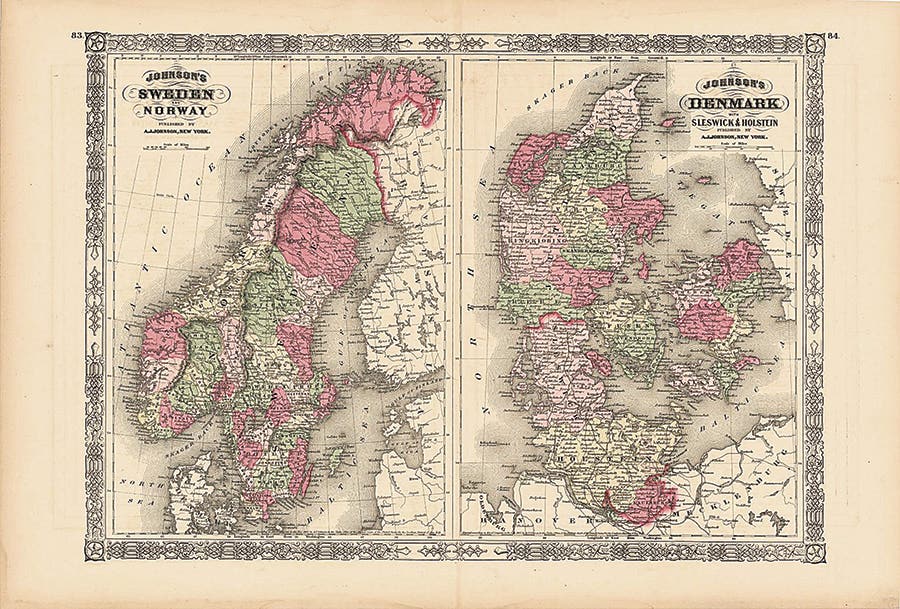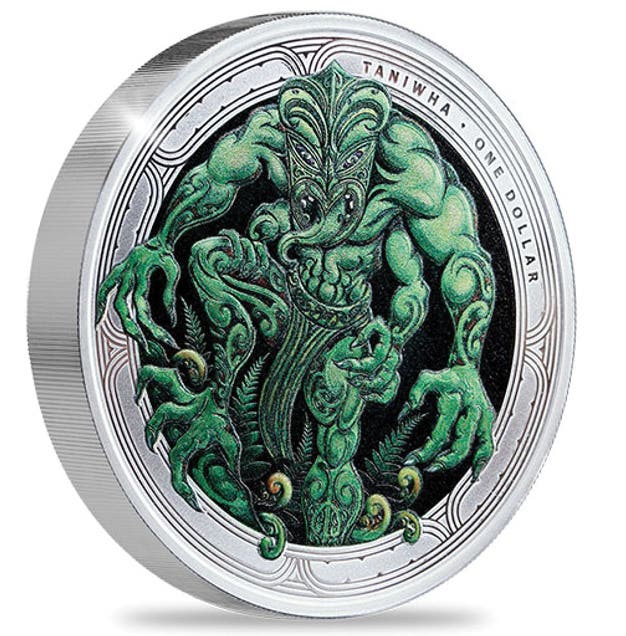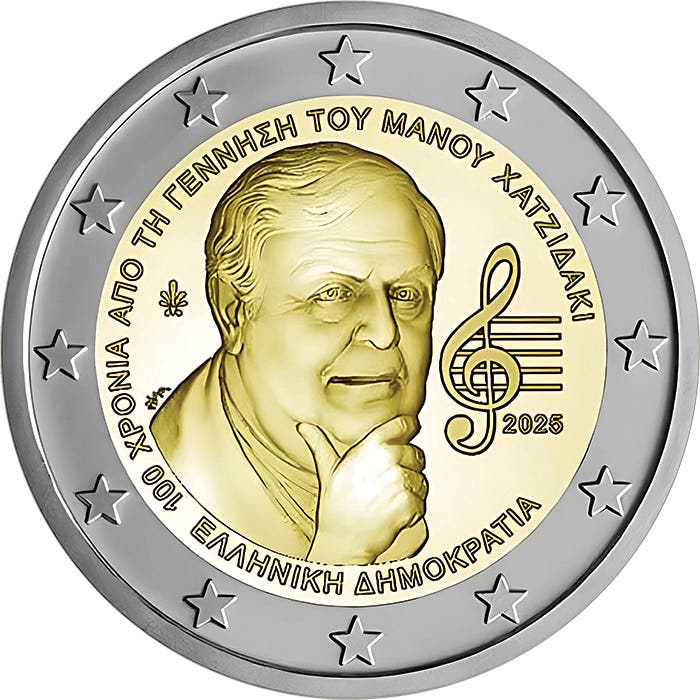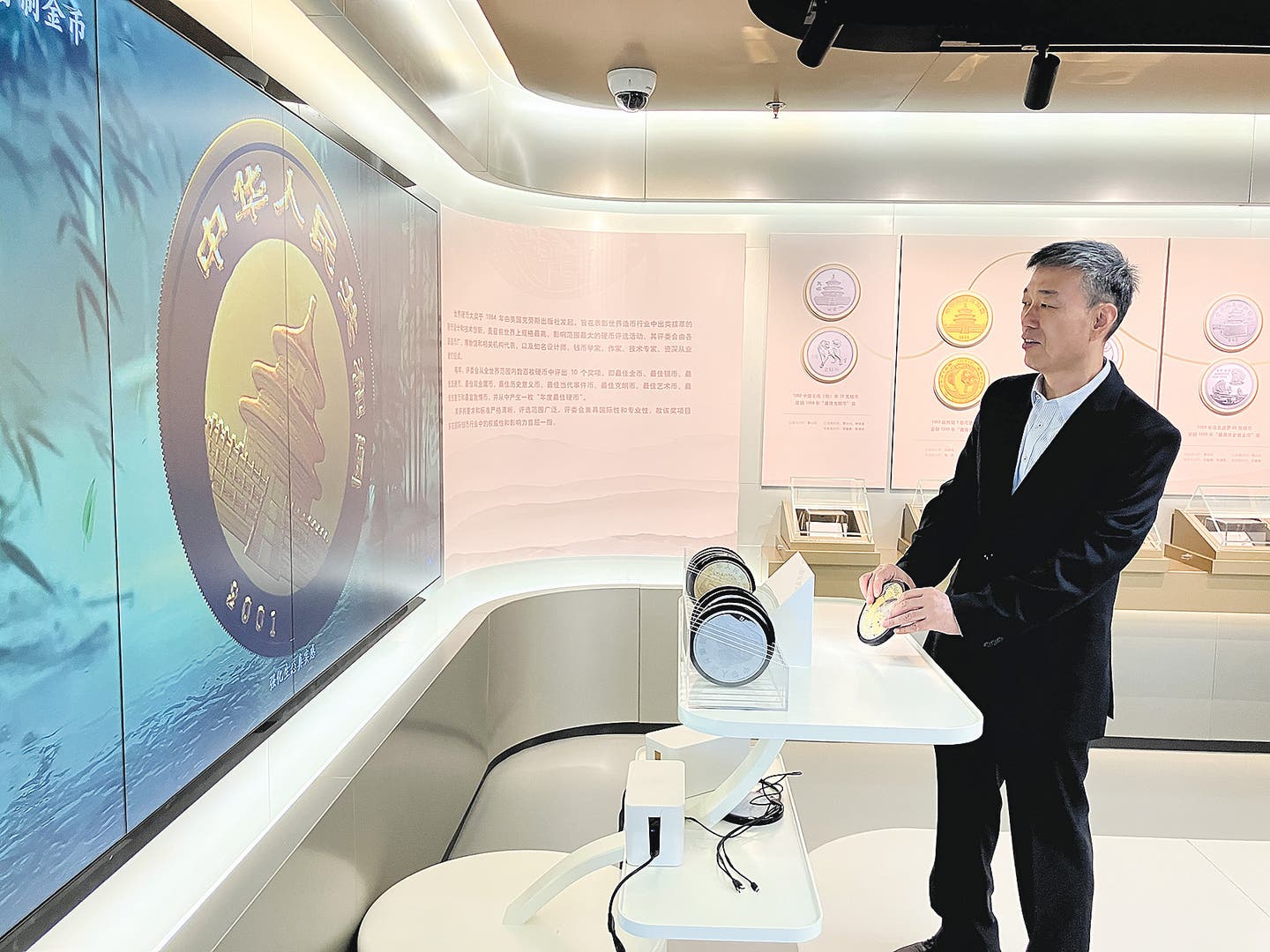Consider expanding to world coins
What’s a young collector to do when United States coins are expensive and beyond her budget, and when she realizes that she can only begin collecting a new series of coins, but never finish?
This article was originally printed in the latest issue of Numismatic News.
>> Subscribe today!
What’s a young collector to do when United States coins are expensive and beyond her budget, and when she realizes that she can only begin collecting a new series of coins, but never finish?
If she does what I did four decades ago she can broaden her horizons and begin collecting coins of the world. There are so many countries to choose from, much to learn, and so many different and unusual pieces, denominations and ways to collect. It’s a whole new world, literally.
The local coin shop had boxes of foreign coins to pick through, a box of cheaper and a box of better foreign coins. Just a glance at the contents piqued my interest and set me on a new collecting path. Best of all, the prices were well within my budget: 25 cents per coin, 35 cents for a better coin. The better box included many older coins and even a few made of silver.
Since I was a Beatles fan and a fan of every British Invasion band to come along, I paid special attention to the coins from England and the British Commonwealth. The denominations were certainly different, with shillings and florins, and a groat or two. Many of the coins were quite attractive, with portraits of Queen Elizabeth or an earlier monarch. I was already familiar with Canadian coins, for once in a while, I’d see one in change.
This was 1967, the time when Canada issued a set of wildlife coins to commemorate the country’s 100th anniversary. Each coin had a different, and lovely design, and I wished the United States would do something similar. No one could predict anything like the state quarter program, which was over 30 years away.
The older Canadian coins were nice, if plain, and albums were available for a set of Canadian cents. There was also an album for a Canadian type set. Many coins from Canada could be found in the dealer’s foreign boxes, including older issues such as Canadian large cents and small silver five-cent pieces and I found I could build a good collection with a minimum cost.
Coins of England were always available, including a few issues of Queen Victoria. Her portrait had appeared on many different coins from different countries and a set of portraits could be put together without much effort. I was surprised to see how many countries were members of the British Commonwealth. It’s not like reading about history in a book; these coins were, indeed, history in your hands.
One of my favorite coins plucked from the better box was a fourpence, or groat, of 1838, bearing a portrait of a young Queen Victoria. The small silver coin was worn but still nice.
When a cousin married and went to England on his honeymoon, his gift to me on his return was a big envelope filled with the coins he and his wife received in change. Some of the New Pence began appearing at this time, just before Great Britain’s change to a decimal currency, so this envelope contained a good mix of halfpennies and threepence, an old silver florin (two shillings) of George V, and a brand new 50 New Pence coin.
A coin shop downtown acquired a few crowns of George VI, dated 1951, to commemorate the Festival of Britain, still housed in their original maroon holders. The holders were a little beat-up, but that added to their authenticity, and their value, in my eyes. The large crowns of Great Britain appealed to me; I even ordered a Victoria “Young Head” silver crown from a dealer in London.
But my foreign coin collection did not stop with coins of England. Coins of Australia were rather cute, with the kangaroo and sheep, and later, the decimal coins with wildlife. My uncle had served in World War II and spent time in the South Pacific. He sent my mother two bracelets made of Australian coins chained together. The obverse of the center coin was smoothed out and engraved, “New Guinea 1944.” What an historical souvenir!
A few months into my collecting career, my uncle found a hoard of coins he had served from his time in the service, and gave them to me for a birthday present. There were coins of Japan and Fiji, and a large 5 Deutsche Mark silver coin with the German eagle. I was amused by the 1944 coins of the Philippines, with the inscription “United States of America.” I found out that these coins were, indeed, struck in the good old USA.
Coins of India were rather exotic. I recall finding a 1 rupee coin of 1940, with a very elaborate design on the reverse, and a 1 anna piece with the inscription in five languages.
Many other British Commonwealth coins could be found, some from Cyprus and Southern Rhodesia with the king’s portrait, countries that are no longer under British rule. One coin of British West Africa bore the name of Edward VIII, the king who abdicated and became the Duke of Windsor. This coin was possibly the only collectible coin with this monarch’s name, though there are many fantasy issues nowadays in the name of Edward VIII.
Coins of France and French possessions were easy to find. I especially liked the coins of French Africa with a design of an antelope coming head-on to the viewer. There were also coins of Cameroon and Madagascar with the French rooster. These coins were different but attractive, and so unlike the United States coins I saw every day.
A few of the early coins of Israel could be found in the foreign box. The plain but symbolic designs appealed to me, and a full set of early issues soon became a part of my collection. One of my favorite dealers had a type set of Israel’s coins, including a 500 pruta silver coin, showing three pomegranates. I later found that the designs on the first coins of Israel were based on ancient coins. Years later, at a convention, I saw a coin over 2,000 years old with a near-identical design to the 500 pruta coin.
I had to get a reference book to identify some of the coins, and check the values of the coins I already owned. I found a “Brown Book” at the local coin shop, and was amazed to find so many coins from so many countries. Yes, collecting foreign coins was quite a challenge. How could I ever find all of these coins?
Having Lithuanian ancestry, I was anxious to find coins of Lithuania, issued in 1925, 1936 and 1938. My grandmother, who started me in collecting with two U.S. silver dollars, gave me a hoard of Lithuanian coins that she had found in her attic. Most of the regular issues were in that hoard, including silver 1 and 2 litu coins, a large silver 5 litai piece, and a few others. The 1938 10 litu, with a portrait of President Smetona, was listed in a guidebook as having the highest value, but that coin was not in the hoard.
Years later, while shopping in the Brighton Park neighborhood in Chicago, I entered a small antique store and found the coin. The owner wasn’t sure exactly what the coin was, and sold it to me for all of $4. The Balzekas Museum of Lithuanian culture was only a few blocks away from the store.
Many other foreign coins were found over the years, and a nice selection of coins from nearly every country in the world were picked out of the boxes at the coin shops I frequented. Some coins came from countries that no longer existed, such as Southern Rhodesia, and Lithuania was then a part of the USSR.
I became interested in the coins of a few particular countries. Besides the British and Lithuanian, I also liked the coins from the Netherlands, Curacao and Netherlands Antilles. A beautiful crown-sized silver coin of Curacao, minted in 1944 and not that rare in Mint State, was a favorite of mine. The coin bore a coat of arms and a portrait of Queen Wilhelmina. I also liked the coins of Greenland, with polar bears. A brass 5 kroner piece, minted at Philadelphia in 1944, was another favorite coin. There was also a silver crown of Denmark with a map of Greenland, a nice companion piece to a selection of Greenland issues.
Coins from Vatican City always interested me, with their symbolism. Different coins were released almost every year, and some were quite lovely. Not too many saw circulation, though. Years later, this interest led to a research article on modern Vatican coins, from 1929 to date.
One day I found a number of World War II era coins in the better foreign box. I guessed somebody had cleaned out a souvenir drawer. A plain 2 franc piece of Belgium, bearing the date, denomination and name of the country in French and Flemish, appeared on the small piece that reminded me of a United States steel war cent. Later I learned that the identical planchet was used. Base metal coins of the Netherlands appeared in this selection, a coin bearing wrenches and one with a large ship.
Looking at all of the different designs of coins from so many different countries gave a young collector an idea to collect in a new way: topical collecting. Coins depicting animals numbered up to a hundred or more, even back in the 1960s and a collector could have a real zoo of her own. The graceful springbok of South Africa, the kangaroo of Australia, the water buffalo of Madagascar, elephants on coins of Thailand, turtles of Tonga and Fiji ... all were there, along with entire sets of coins from Ireland, Norway and Canada.
Many different birds appeared on world coins. I was always a bird lover and thought such a collection would make a good set-within-a-set. Eagles were commonly seen on coins of Austria, Germany, Poland and Russia. A beautiful peacock appeared on older coins of Burma, a kiwi on coins of New Zealand, of course, and an ostrich on coins of Australia. A bird of paradise appeared on coins of German West Africa, and a quetzal on the 1 quetzal coin from Guatemala – a country that named its monetary unit after a bird.
Topical collecting didn’t have to stop with animals. A selection of coats of arms from different countries can make a nice set. The British shillings had the English and Scottish versions. The Bahamas coat of arms had a flamingo – another animal. Australia had a kangaroo.
Ships on coins make an impressive set. I once met a collector who had such a set, and his collection included quite an array of ships, or should I say fleet? From the small aluminum coins of St. Pierre and Miquelon, to John Cabot’s ship Matthew on a 1949 Canadian silver dollar, to the dhow of Kuwait and a Viking ship from Iceland. The 1963 Israel Seafaring crown would have been a great addition to my holdings, but even then, it was scarce and in high demand. Even a few U.S. coins would qualify for this set, such as Henry Hudson’s Half Moon on the commemorative half dollar.
Food and crops on foreign coins appeared, too, such as peanuts on coins from The Gambia and cocoa pods of coins of Ghana, wheat on Bulgarian and Lithuanian coins. Most everything from soup to nuts, literally, could be found on foreign coins.
How about buildings and famous landmarks on foreign coins? The 1939 Canada silver dollar with the Parliament building was one. Another favorite was a small coin from Egypt with the sphinx.
Many foreign coins also had their own rendering of Liberty. A pretty Liberty head, wearing a cap, appeared on some coins of Argentina, and this reminded me of early U.S. coins. Liberia, too, used a pretty Liberty head. French coins, of course, had the famous Marianne, their symbol of the Republic. One coin reminded me of the Walking Liberty half dollar.
The more I collected foreign coins, the more I wanted to collect, and become aware of the many lovely coins I didn’t know existed until I had begun picking through the boxes at the coin shop. This was a collection with no end in sight, very different from filling holes in an album and then forgetting about it. And new issues kept coming.
I didn’t realize how vast a world collection could be until I had to do a project for school, a world geography class. The semester project could encompass research, a paper, a talk; the teacher left it up to the individual student. I chose to show off my world collection by taking a large map of the world and mounting coins from the different countries directly on the map.
Each coin was placed in a soft plastic holder and taped securely to the map. I had coins from all six inhabited continents. I tried to use smaller coins in order to fit as many coins as possible on the map. It took a while, but the result was impressive, and it impressed the teacher too. Even a few of my classmates were seen to examine the map and ask questions. Yes, I got an A!
During my early years in the hobby, quite a few “fantasy” pieces appeared, such as gold and silver pieces from a “Republic of Minerva.” I didn’t pay much attention to these pieces – I hesitate to call them “coins” – and concentrated more on real, circulating money that was listed in the reference books. The only fantasy piece I really wanted was a silver ryal from Sharjah with a portrait of John F. Kennedy.
Soon after my school project was done, I got away from foreign coins, and collecting coins in general, to concentrate on other things. I was very involved in school activities and didn’t have much time to devote to coins.
Years later, when I came back to collecting in full force, I fondly remembered my foreign coins and the joy of collecting so many different pieces, learning and making new discoveries, poring over the catalogs to find where certain coins were from. Even now, I wonder where my collecting world coins would have taken me now, as an older collector with more experience and knowledge.
I still see foreign coins that appeal to me, such as a complete set of 1925 Albanian coins, in a custom made holder, seen at a downtown coin shop.How many of these sets survive, especially the crown? The British proof sets and Maundy sets are still there to collect. Sets of the new euro coins are attractive, too, and some are quite scarce, such as the coins from the Vatican.
A coin calendar of a recent year had a pretty and unusual coin pictured for January – a gold coin of German East Africa with an elephant. I would have liked to add this coin to my holdings if I was still involved in foreign coin collecting. Maybe this coin, or another coin, could convert me back to foreign coin collecting, and I could find a whole new collecting world, all over again.
Should I decide to jump back in, the Standard Catalog of World Coins will be my guide.
More Coin Collecting Resources:
• Subscribe to our Coin Price Guide, buy Coin Books & Coin Folders and join the NumisMaster VIP Program









